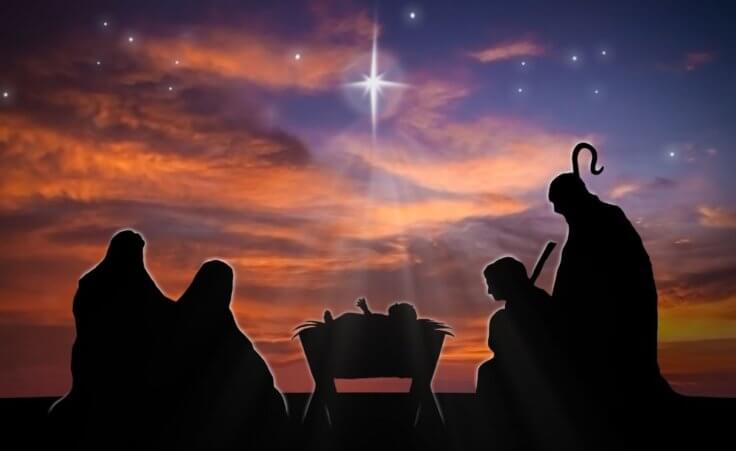
Mike Winkelmann, who goes by Beeple, shows off his digital art process in his home studio, Wednesday, Feb. 24, 2021, in Ladson, S.C. (Andrew J. Whitaker/The Post And Courier via AP)
Christie’s is one of the world’s leading auction houses, frequently selling artwork for millions of dollars. When a piece by da Vinci sold for more than $450 million, the news made headlines. Though that amount of money is incredible, especially to spend on one painting, it somewhat makes sense because it’s Leonardo da Vinci.
But in March, digital artist and graphic designer Mike Winkelmann, known as “Beeple,” sold a piece of art at Christie’s for over $69 million dollars. The art he sold, however, was entirely digital.
What’s the story behind this magnum opus?
Beeple created a new digital art piece every single day for five thousand days in a row. Much of his art is magnificent and beautiful, but some pieces are deeply disturbing. Most comment on politics and pop culture, but they also reflect personal milestones.
He then compiled these five thousand images into one JPG file and titled it “EVERYDAYS: THE FIRST 5000 DAYS.” You can access most of the individual images online and see the whole work here, though I wouldn’t recommend looking too closely (some images are grotesque and surreal, the feeling that gives one a sneaky suspicion that reality may not be real).
This image can be accessed by anyone on the internet, so why did someone purchase it for $69 million?
The buyer actually purchased an NFT, and he did so with Ether, a cryptocurrency similar to Bitcoin. You may have seen news reports or heard about the hype behind NFTs. In line with the cultural savviness principle, we need to do our best to stay afloat in the digital age, so we’ll take a detour to explain what NFTs are before providing a biblical application.
What are NFTs?
NFT stands for non-fungible token. Hopefully, that clears everything up.
Wait—what in the world does non-fungible token mean?
Non-fungible means that, even though there are duplicates of whatever thing you’re talking about, it is still unique.
Stick with me here, I’ve got an example.
Think about dollar bills. I could change out five one-dollar bills for a five-dollar bill and it would keep the same value. It also doesn’t matter which dollar bills are which; the bank doesn’t care. Dollar bills are, therefore, “fungible.” (It’s a fun word to say out loud. I recommend it).
Consider this story though. What if you had a lemonade stand when you were nine years old, and, for the first glass of warm, unsweetened, frankly terrible lemonade you sold to your mom, she gave you a dollar. You saved that first dollar you ever earned, and, eventually becoming a successful entrepreneur, you framed the dollar to remind yourself of your roots. That particular dollar bill is unique; it’s non-fungible, even though it’s technically still only worth exactly one dollar to everyone else.
Consider another easy example: two baseball hats. If one was signed by Roger Clemens and the other was a regular cap, the signed one would be “non-fungible” (and worth a lot of money), but the regular cap, being almost identical to other mass-produced baseball caps, would be “fungible.”
Make sense? Beeple’s image is unique because it has a signature of sorts, but anyone can see it and copy the image itself.
So, what about “token?” The token refers to the media of the art, the art itself, whether it be a video, GIF, or JPG. The difference between the token you are buying and the file (which can normally be accessed through the internet) is that you have a “signature” from the artist.
This signature is encrypted, like Bitcoin. Think of it like a serial number on a dollar bill. In the lemonade example, if you lost your bill, you could find it by knowing the unique serial number on it. This is true of NFTs: only the owner has the serial number. NFTs create scarcity by having their unique identity stored online with blockchain technology like Bitcoin and Ether.
But, Bitcoin and Ether are fungible like dollar bills, whereas someone “owns” the non-fungible “Nyan cat” token (a viral GIF of a pop-tart cat that flies by the power of a rainbow, which sold for around $600,000).
Hopefully, that helps explain what NFTs are.
Why would someone spend $600,000 on a GIF?
It’s easy to see why people buy NFTs. Though you can’t copyright the token, you can brag that you own the original, resell it, and keep a piece of internet history for yourself.
Though it was more fringe in 2017 when it started, innovative geeks are no longer the main audience. Not only have NFTs broken into the art scene, but it’s also broken into mainstream sports. The NBA currently sells NFTs on their groundbreaking market, “Top Shot,” which launched in 2020. In plain terms, the NBA explains that they’re like virtual trading cards. From this market, they’ve already grossed $230 million. One short highlight clip of LeBron James is priced for $240,000.
Some think that, because this is a radically brand new market, the hype could be creating a “bubble.” Spending on NFTs has gone down a bit in the past two months, and some Top Shot users are complaining that they aren’t able to withdraw money from their accounts. Everyone agrees that the market is incredibly speculative, meaning everyone is still figuring out the true value of these NFTs.
This is a new, rapidly expanding frontier in the digital world. But it tells us something essential about the way God made us.
True value and God’s image
In a free market, people in society assign value to things. How much is that coffee mug worth? Well, in a free market, it entirely depends on how much people are willing to spend on it. It is predicated on people’s collective valuation; its value is subjective. Postmodernists, relativists, and culture claim that moral values are subjective like this.
Contrary to this, the biblical worldview claims that God gives value to things. What gives us value is God’s ownership of us.
Consider Genesis 9:6, a miniature poem that God speaks to Moses: “Whoever sheds the blood of man, by man shall his blood be shed, for God made man in his own image.” Why, exactly, are people valuable and should not be murdered? Because God owns us, because we are his artwork, and he assigns us value.
NFT markets may be subjective and volatile. This is often true of the culture, our friend groups, and even our family, who all may love us one day and cast us down the next.
But we can rest assured that God values us and faithfully loves us (Exodus 34:6–7), and that will never change.













